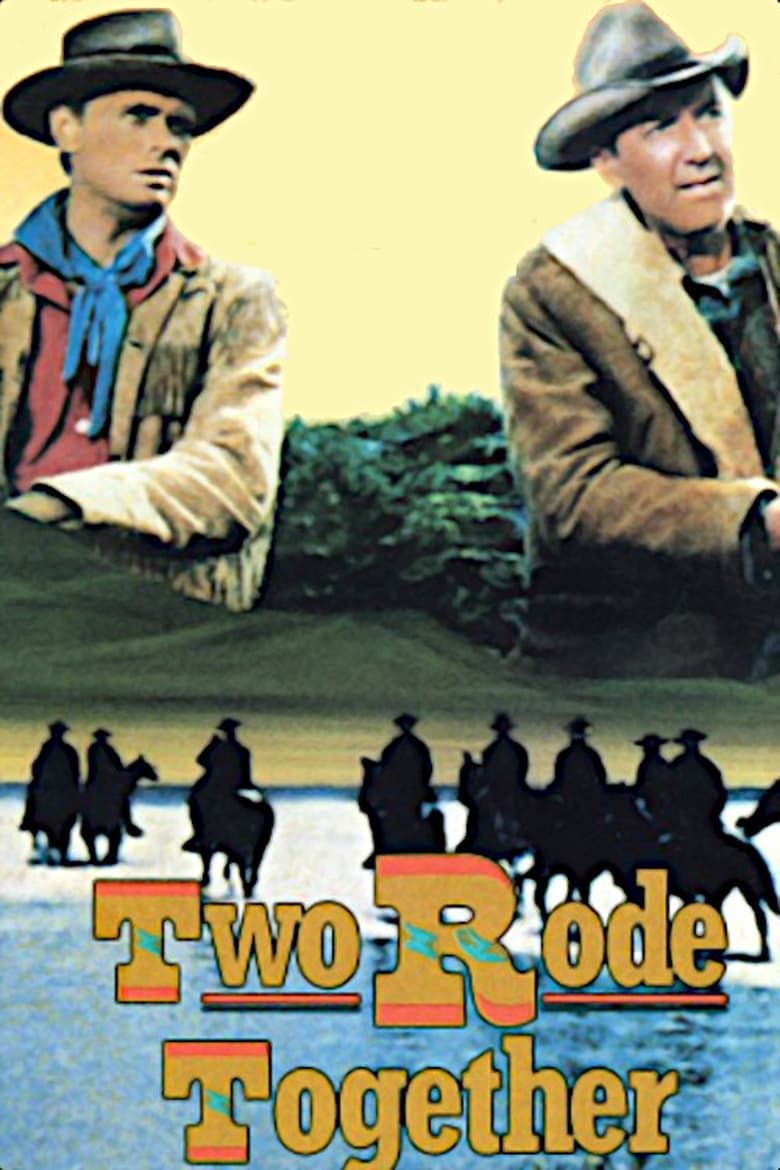
Jimmy Stewart Shines in This Overlooked John Ford Western
Towards the end of his illustrious filmmaking journey, John Ford found himself reflecting on the impact of his cinematic contributions. Starting with <em>The Searchers</em> and culminating with The Man Who Shot Liberty Valance, Ford—a decorated WWII Navy veteran—crafted a narrative that portrayed an optimistic vision of America, steeped in idealism and rich storytelling. His films, while visually stunning, serve as a profound critique of American culture and history, revealing underlying themes of myth-making that perpetuate racism and a distorted view of the white savior complex. One of Ford’s lesser-known masterpieces, Two Rode Together, exemplifies this with its poignant exploration of these themes, relying on the compelling performances of Jimmy Stewart and Richard Widmark.
Explore John Ford’s Insightful Critique of Western Politics and Sociology in ‘Two Rode Together’
John Ford’s films often engage in a dialogue with one another, creating a rich tapestry of cinematic narratives that resonate throughout the decades. Two Rode Together serves as a compelling counterpoint to The Searchers, which follows a heroic quest to rescue a kidnapped girl. This earlier film, however, is deeply influenced by the bigotry and hatred embodied by Civil War veteran Ethan Edwards (John Wayne). While The Searchers showcases breathtaking vistas through the lens of a racist protagonist, Two Rode Together, crafted by Frank Nugent, explores the lives of two lawmen navigating a community rife with prejudice. Ford’s 1961 Western highlights the cynical Marshal Guthrie McCabe (Stewart) and Army Lieutenant Jim Gary (Widmark) as they interact with a Comanche tribe to negotiate the release of white captives, notably Marty Purcell (Shirley Jones). The film delves into the complexities of reintegration and the repercussions faced by those freed from captivity.
Using his talented ensemble cast, John Ford expertly weaves narratives that reflect themes of family, community, and survival. From the diverse travelers of <em>Stagecoach</em> to the impoverished families depicted in The Grapes of Wrath and How Green Was My Valley, Ford’s storytelling often revolves around collective experiences. In Two Rode Together, he constructs two vivid worlds: the white frontier settlement and the Comanche tribe. Ford captures a documentary-style portrayal of these distinct communities, emphasizing the intricate dynamics and cultural complexities that exist within both groups.

Related
Discover Why This Once-Overlooked Classic Western Is Among John Ford’s Finest Films
This film closely aligns with the legendary director’s artistic vision and storytelling prowess.
John Ford, known for his sharp wit, famously expressed disdain for Two Rode Together, deeming it “the worst piece of crap I’ve done in 20 years.” In contrast to his previous works, this film is less focused on the visually romantic aspects of the West, exhibiting a more languid pace that may lead viewers to anticipate a significant dramatic climax. Nonetheless, Ford’s artistic restraint effectively anchors this mythical narrative, reflecting the socio-political divides that persist in modern America. The film’s commentary on the ongoing tensions between communities and the sentiments towards minority groups resonates profoundly in today’s society, underscoring that such issues are far from historical relics.
Uncover Jimmy Stewart’s Role as a Purpose-Driven Law Officer in ‘Two Rode Together’
As the protagonists, McCabe and Gary traverse the expansive landscape, reflecting upon their journeys, Two Rode Together showcases Ford’s prowess as a humanist and character-driven filmmaker. The performances by Jimmy Stewart and Richard Widmark, who typically embody contrasting archetypes, are refreshingly understated and poignant. Stewart’s McCabe is a morally ambiguous Marshal, entangled in local corruption, while Widmark’s Gary emerges as an unexpectedly empathetic character, advocating for diplomacy to bridge the gap between conflicting territories. Despite McCabe’s façade as a diligent lawman, his ambivalence towards broader conflicts—save for his personal disputes with women and business dealings—paints him as a man adrift without a clear purpose.
Before the concept of “One Perfect Shot” became a staple in film discussions, each frame crafted by John Ford was a masterpiece in itself. In Two Rode Together, Ford embraces a minimalist yet deeply emotive visual narrative. A striking scene captures McCabe and Gary sharing a moment by a riverbank, where they candidly discuss their emotional struggles and the capitalist pressures of America, intertwined with the persistent conflict with the local Comanche tribes.
The elegant simplicity inherent in Ford’s direction reveals a subtle form of Western poetry as the characters engage in their conversation, each puff of cigar smoke punctuating the moment. McCabe’s insecurities regarding his relationship with Belle (Annelle Hayes) serve as the catalyst for his decision to embark on this mission. Themes of domestic uncertainty, including the challenges of settling down, echo throughout Ford’s narratives, reflecting traditional notions of masculinity. Notably, McCabe’s engagement to Belle is strained by their disagreement over his share of her saloon’s profits. This quietly powerful scene encapsulates Two Rode Together‘s poignant exploration of the disillusionment tied to American expansion during the 19th century.

Two Rode Together
- Director
- John Ford
- Runtime
- 109 minutes
- Release Date
- July 26, 1961
- Writers
- Frank S. Nugent
- Producers
- Stanley Shpetner
Two Rode Together is currently available for rent or purchase on Prime Video in the U.S.
WATCH ON PRIME VIDEO




